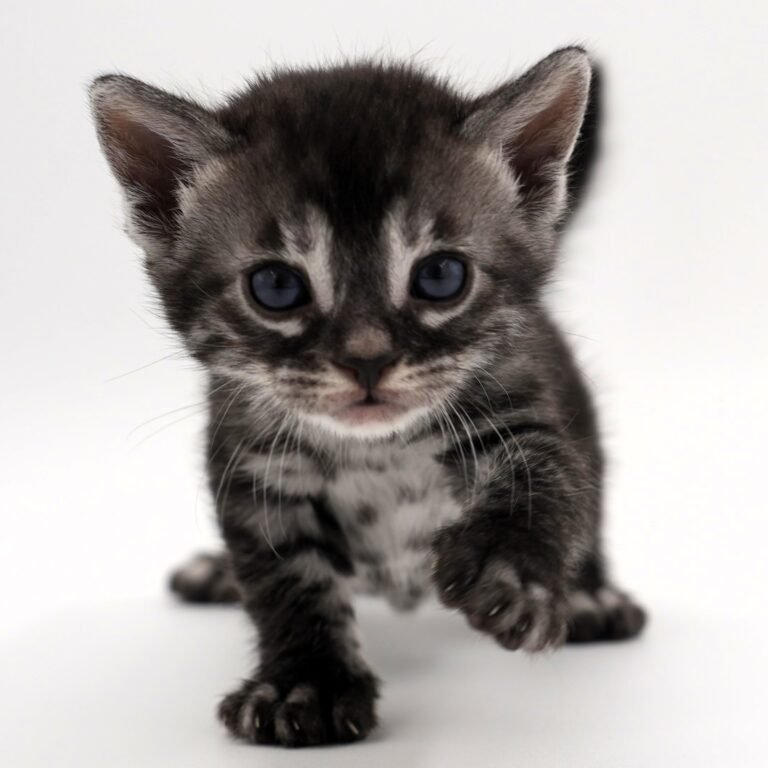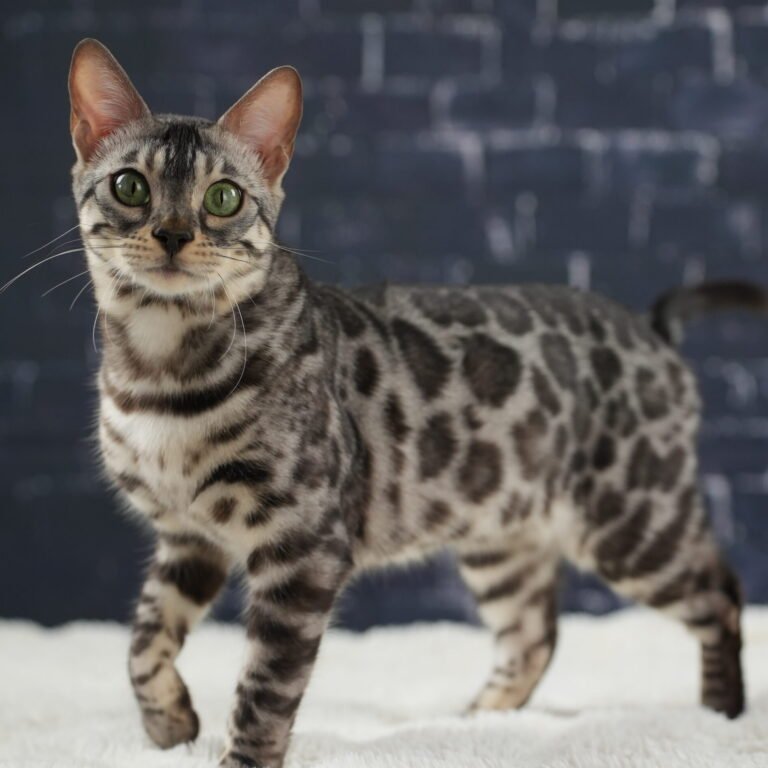Understanding Bengal Cat Generations
Bengal cats are categorized by generations based on their distance from their wild Asian leopard cat ancestor. Earlier generations exhibit more wild traits, while later ones are more domesticated. This system helps to clarify a Bengal’s genetic makeup, potential traits, and suitability as a pet.

General Terms
ALC – Asian Leopard Cat
F – Filial Generations
G – Generation
SBT – Stud Book Tradition

Wild Beginnings: The Asian Leopard Cat (ALC)
The story of the Bengal cat begins with the Asian leopard cat (ALC), a small wild cat native to Southeast Asia. The ALC is known for its vibrant coat pattern, which features distinctive spots and rosettes similar to the African leopard. It’s this wild ancestry that gives the Bengal its unique appearance.

First Generation: F1 Bengals
The first generation of Bengals, known as F1s, are the direct offspring of an ALC and a domestic cat. These Bengals are 50% ALC, inheriting half of their genes from their wild parent. F1 Bengals are the most similar to the Asian Leopard Cat in both looks and behavior. They are majestic and powerful, and while they can be tamed, they are still considered wild.

Second Generation: 2G Bengals
As we move to the second generation, 2G Bengals, the wild genes are diluted, but with selective breeding practices, the exotic appearance will remain strong. 2G Bengals are the result of breeding an F1 Bengal with a domestic cat, bringing the ALC lineage down to approximately 25%. These felines tend to adapt better to life indoors when compared to their F1 parent although they are still not considered domestic.

Third Generation: 3G Bengals
By the time we reach the third generation, or 3G Bengals, the connection to the Asian leopard cat becomes more distant, with only about 12.5% of their genetics coming from the ALC. 3G Bengals are typically more sociable and better suited to family life. Although G3 bengals are still considered wild they are often indistinguishable in behavior from fully domestic cats.
Stud Book Tradition (SBT) Bengals
SBT (Stud Book Tradition) Bengals are at least four generations removed from the Asian leopard cat. these felines are considered fully domesticated and embody the breed standard recognized by major cat registries like TICA (The International Cat Association) and CFA (Cat Fanciers’ Association). SBT Bengals are the most prevalent generation of Bengals found in homes today, offering the exotic appearance of their wild ancestors without the behavioral challenges associated with earlier generations.
Are there F2 & F3 Bengals?
No, there are no F2 or F3 Bengals. Here’s the reason:
Typically, in genetics, an F1 female and an F1 male would produce F2 offspring, and an F2 female and an F2 male would produce F3 offspring. However, this isn’t applicable to Bengals because F1 male Bengals are infertile.
Instead, we use ‘G’ to denote ‘Generation’ in Bengals. A 2G Bengal is the second generation, produced by breeding an F1 Bengal to a domestic cat. Similarly, a 3G Bengal is the third generation, produced by breeding a 2G Bengal to a domestic cat. This distinction is crucial in understanding the lineage of Bengal cats.





